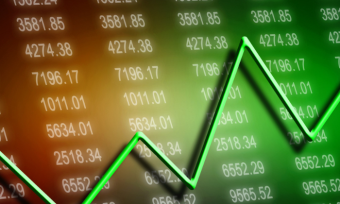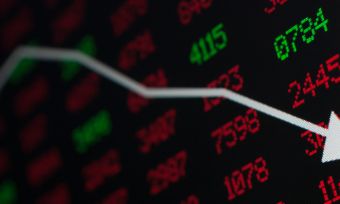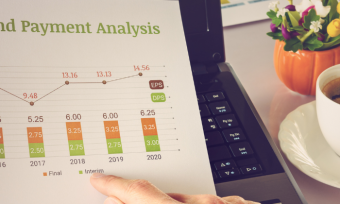What is an ETF?
An Exchange Traded Fund, or ETF, is a type of pooled security that can be traded on a stock exchange. An ETF pulls together multiple securities into one easy-to-trade stock.
For example, an NZX50 ETF contains shares of all the 50 largest companies on the New Zealand Securities Exchange (NZX) grouped together into one package. When you buy shares of an NZX50 ETF, you are essentially buying a little piece of all the 50 biggest companies without the need to make 50 separate purchases.
In this sense, an ETF can be seen a little bit like a fruit basket. Instead of making multiple purchases of apples, bananas, pears, grapes and more, you can just buy a single fruit basket that already contains a combination of all these fruits.
How do ETFs work?
Exchange-traded funds (ETFs) typically track a stock index (NZX50, ASX200, etc) or sector (Tech, Energy, Finance). You can also get ETFs that track a commodity (such as the price of gold), bonds or a range of assets.
This is typically (but not always) done by the ETF investing in those securities. For example, an NZX50 ETF tracks the performance of the NZX50, because it has invested in those 50 companies. Or, a gold ETF reflects the price of gold because it has invested in buying stores of physical gold.
As a result, an ETF’s performance directly correlates to the performance of the securities within it. Going back to the fruit basket analogy – if the prices of individual pieces of fruit rise, the overall price of the fruit basket would go up, too.
It’s worth noting that not all ETFs work in this way. While one ETF may track the price of gold by holding physical stores of gold, another may undertake multiple different financial strategies in order to make its share price reflect the price of gold.
ETFs are listed and traded on the stock market, making them easy to buy and sell. Essentially, you can invest as easily as you can any individual company’s stock.
Active vs Passive ETFs
Passive ETFs
Traditionally, ETFs have been passive; they aren’t actively managed. Rather, they exist to track an index or commodity, as mentioned above. For example, a passive S&P500 ETF aims to simply track the price of the S&P500 index. It does so by holding shares of those companies, and it doesn’t actively trade them. That means if the S&P500 goes down, so too will your ETF.
Passive ETFs don’t make any performance-based decisions. Even if a company begins to perform badly, as long as it remains on the S&P500 index, the ETF will continue to hold it.
Active ETFs
Active ETFs are a little different. While they typically have a benchmark index, they aim to outperform this index. So, instead of tracking the S&P500, the ETF aims to beat it.
In order for an ETF to be active, it must be managed by a fund manager or team. This means if a certain company starts performing badly, the manager of an active ETF may look to sell off those stocks and invest elsewhere, or make other investments to counteract the underperforming company. They might also make preemptive decisions to try to time the market.
However, while the goal of an actively managed ETF is to outperform the market, there is no guarantee that it will. And as active managers have the freedom to trade outside their fund’s index, shareholders may not always know the exact make-up of their ETF holdings.
ETFs vs Managed funds
ETFs are similar to managed funds, as both are pooled investment vehicles. With both, you can also gain exposure to a wide variety of investment options.
As with the examples above, by using both ETFs and managed funds you can invest broadly, gaining exposure to hundreds of holdings in the single investment. Alternatively, your investment can be more focused, such as tracking a single sector.
The key difference between the two is an ETF can be traded on the stock market. Allowing you to buy and sell your holdings like you would an individual company stock. Whereas a managed fund is offered by a particular broker or provider.
ETF investors also typically have a transparent view of their fund’s holdings and investment value, this is not always the case with managed funds.
→Related article: How To Choose a Managed Fund
Why invest in an ETF?
There are a number of benefits ETFs can provide to investors, such as:
Diversification – ETFs can provide investors exposure to a number of different asset classes, countries and sectors all in a single trade.
Lower management fees – the management fees for ETFs tend to be lower compared to managed funds. And, unlike managed funds, most ETFs do not charge a performance fee.
Liquidity – because ETFs are traded on the stock market, it allows investors to trade ETFs stocks with relative ease, making it a highly liquid asset.
Pricing – ETFs trade very closely to their net asset value. Because ETFs are traded on the stock market, investors are able to see the price and value of their investments.
Risks
Like all stock market investments, ETFs come with inherent risks. Supply and demand, as well as other factors, such as the economy, industry trends or companies’ performances, can all affect an EFT’s price.
The level of risk will also be impacted by the level of diversification in the fund. Does it hold the shares of five companies or 500? Or, is it tracking the performance of a single asset, such as gold?
→Related article: Investing for Beginners: Tips for Starting a Share Portfolio
How to invest in ETFs
As ETFs are traded on the stock market, in order to invest in them you will need a broker or an online share trading platform. If you are looking to get started, there are plenty of easy to use online share trading platforms available here in New Zealand.
And here at Canstar, we compare them! So if you want to see the results of our latest Online Share Trading award, or if you’re simply looking to learn more about share trading, then hit the button below:
Compare online share trading platforms

About the author of this page
This report was written by Canstar Content Producer, Andrew Broadley. Andrew is an experienced writer with a wide range of industry experience. Starting out, he cut his teeth working as a writer for print and online magazines, and he has worked in both journalism and editorial roles. His content has covered lifestyle and culture, marketing and, more recently, finance for Canstar.
Enjoy reading this article?
You can like us on Facebook and get social, or sign up to receive more news like this straight to your inbox.
By subscribing you agree to the Canstar Privacy Policy




Share this article